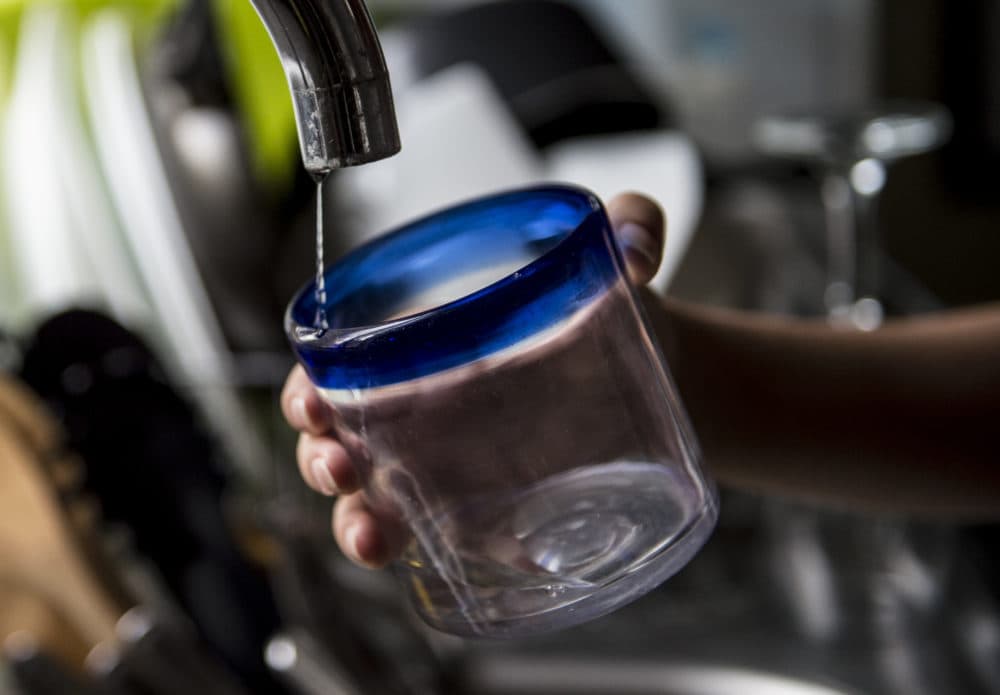Advertisement
Study Looking At PFAS In Drinking Water Begins In Hyannis This Summer

Researchers are beginning a five-year, multi-state study to look at the long-term health effects of the toxic chemicals known as PFAS in drinking water. In Massachusetts, the study will focus on Hyannis and Ayer — two communities where public drinking water supplies were contaminated by firefighting foams used at nearby fire training areas.
Barnstable town manager Mark Ells, speaking at a webinar to announce the study, noted that Hyannis has PFAS-free drinking water after the town spent millions of dollars to install a filtration system. But, he added, ”the concern regarding these emerging contaminants is ever-present.”
There are thousands of chemicals in the PFAS family, and people can be exposed to them in many ways, like through food or consumer products. Laurel Schaider, the research scientist leading the study for the Newton-based Silent Spring Institute, says for many communities the top culprit is contaminated drinking water.
“There are so many communities across the country that have had contamination of their water supplies, and we think that in these communities that their exposures from drinking water will be much greater than from other pathways of exposure,” Schaider said. “And in some ways, it's easier to go back in time and to reconstruct what past water concentrations might have been, as opposed to trying to estimate what past consumer product or food exposures might have been.”
There are currently no federal laws limiting PFAS chemicals in drinking water. Last fall, the Massachusetts Department of Environmental Protection (MassDEP) set a standard of 20 parts per trillion for the total amount of six PFAS chemicals in drinking water. The state standard is one of the toughest in the country, considerably stricter than the EPA's non-enforceable guideline of 70 parts per million.
The state required that public water systems with more than 50,000 customers begin PFAS testing on Jan. 1, 2021. Water systems with 10,000 to 50,000 customers had to start testing by April 1 and “many of those have already done so,” according to MassDEP spokesperson Ed Coletta. Systems under 10,000 need to start testing by October 1.
So far, 52 out of 583 public water systems tested had PFAS levels above the state drinking water standard, according to state data. Of these, 23 water systems are still providing water to customers “as they continue to assess and evaluate short- and long-term options that get below the standard,” Coletta said in an e-mail.
For Schaider, the state data underscores the importance of developing a better understanding of the long-term health effects of PFAS in drinking water. The PFAS chemicals that towns are now detecting “have been in the water probably all along,” she said. “We just weren't testing for it and didn't know it was there.”
Advertisement
PFAS chemicals have been linked to liver and kidney disease, high cholesterol, low birth weight, and other harmful health effects. But Shaider says that in-depth health information exists for only a handful of the most common PFAS chemicals, some of which are no longer produced in the United States.
“These older chemicals are being replaced with other PFASs which share many of the same chemical properties,” she said. “We have far less information about their harmful health effects, but early evidence suggests that they can cause some of the same harmful health outcomes as the chemicals that they're intended to replace."
The new study, funded by the Centers for Disease Control and Prevention and the Agency for Toxic Substances and Disease Registry, is meant to remedy some of these information gaps, looking at a longer list of chemicals and combining data from study sites across the country.
“The power of the study really comes from combining data across so many different communities,” Schaider said. “It tell us more definitively about links between not just current levels in people's blood, but also their lifetime exposures.”
Schaider hopes to recruit 1,000 adults and 300 children for the Massachusetts portion of the study, which starts in Hyannis this summer.
Editor's note: the Massachusetts Department of Environmental Protection (MassDEP) PFAS standard is 20 parts per trillion for the total amount of six PFAS chemicals in drinking water. The original article stated the number incorrectly. WBUR regrets the error.
